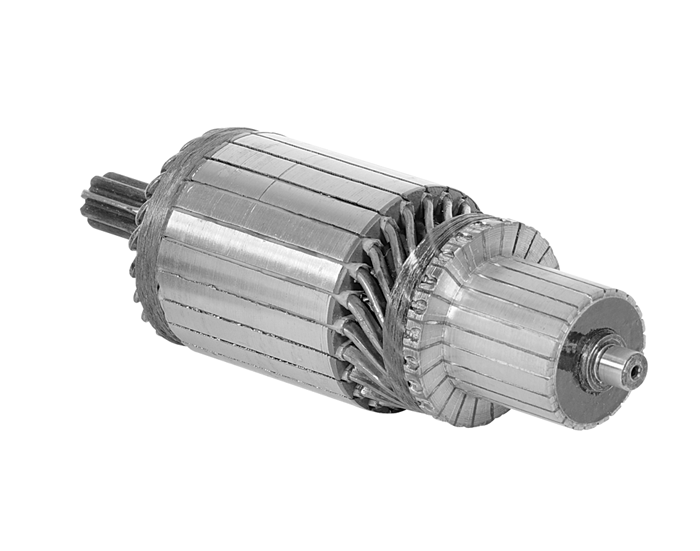Armature
Armature may be referred to one of the two principal electrical components of an electromechanical machine - a motor or generator, but may also mean the pole piece of a permanent magnet or electromagnet, or the moving iron part of a solenoid or relay.
The role of the component is simply to create a magnetic field (magnetic flux) for the armature to interact with, so this component can comprise either permanent magnets, or electromagnets formed by a conducting coil. The armature, in contrast carries current so in a form of conductor or a conductive coil, oriented normal to both the field and to the direction of motion, torque (rotating machine), or force (linear machine).
An electromotive force ("EMF") is created by the relative motion of the armature and the field. When the machine work as a motor, the EMF produces a resistance for the armature current, and the armature converts the electric power to mechanical torque. The generated load is transfered through the shaft. In the induction generators, these distinction are totally blurred, since the generated power is drawn from the stator, normally be considered the field.
All General Use Housings/Armatures have an integrated electrode protection design to prevent possible damage of the electrode membrane due to solid components. Available with accessories such as weld-in-sockets and Flow-through cells.
The role of the armature can be described in two folds:
- To carry current crossing the field, thus creating shaft torque (in a rotating machine) or force (in a linear machine)
- To generate an electromotive force ("EMF").



